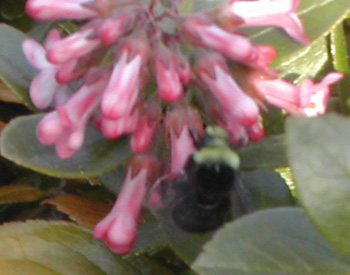
A conversation while walking to school with the Free-Ride offspring:
Younger offspring: Look out, a bumblebee!
Dr. Free-Ride: We’re far enough away that we’re not bothering it. I doubt it would sting you unless it was scared you were going to hurt it.
Elder offspring: Hey, did you know that bumblebees make their nests underground?
Dr. Free-Ride: No, I didn’t. How do you know that?
Elder offspring: I saw one fly out of a hole in the ground with [Dr. Free-Ride’s better half] once.
Dr. Free-Ride: Hmm. Do you think you want to draw a general conclusion on bumblebee nesting habits on the basis of one bee you saw one time?
Elder offspring: Well, I also read about it in a book.
Dr. Free-Ride: Was it a book like the giant squid book?
Elder offspring: No, it was a Magic Schoolbus book. It’s reliable.
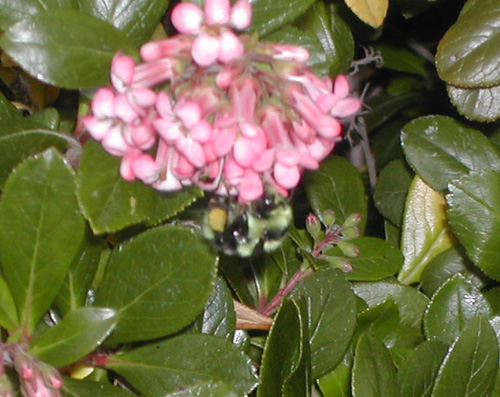
We’ve been spending more and more time outside, which means that we keep popping into bees who are buzzing around amongst all the flowering things. Naturally, that means we’ve had a number of bee-related discussions.

Younger offspring has anxiety about the potential for bee stings. It matters not at all that we’ve explained (repeatedly) that the barbs on the stingers mean that the bee dies from the sting (because the stinger gets stuck like a fishhook in the stingee’s skin and the bee ends up ripped in two). Younger offspring doesn’t fully trust the bees to remember their self-interest.
Of course, the bees that reliably die when they sting are honeybees. Bumblebees can sting and sting and sting some more.
A piece of information I’d be interested to see is whether, in a particular set of circumstances, the varieties of bee that die when they sting are more or less likely to sting you than some sting-and-tell variety. Anyone know? (I’m not anxious to test this empirically myself if the information is already out there.)
Less anxiety-provoking is the help bees provide in plant fertilization. The sprogs think that’s pretty cool. Also, bees suck down nectar from flowers, and the nectar ends up becoming honey, which means … honey is bee-puke! Kind of. The sprogs are still at an age where the boundaries between gross and wonderful are fairly porous.
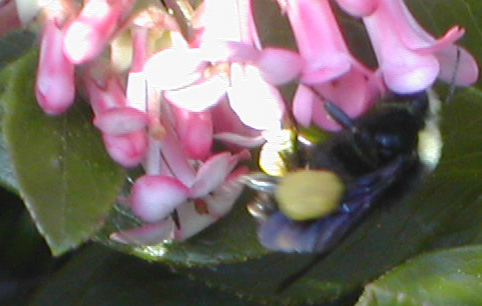
Given the number of blooming things we have (including fruit trees), the thought of actually trying to keep bees (as opposed to counting on casual bee labor) has crossed my mind, and I’m sure Uncle Fishy would encourage me in this delusion. This turns my mind to the honeybee crisis, though. While some of the explanations I’ve heard for hive collapse in commercial honeybee populations point to the stress of being trucked long distances — not an issues we’d worry about with a non-commercial backyard hive, if we had one — keeping a healthy hive (as a human) is probably trickier than it seems. We seem already to have a pretty diverse population of pollinators (including butterflies, hummingbirds, and other bugs as well as bees), so we don’t need to add honeybees. We don’t eat a whole lot of honey, either.
Besides, the sprogs talked me into getting a carnivorous plant for Mother’s Day, and I’d feel kind of weird about raising competing organisms in a food web.
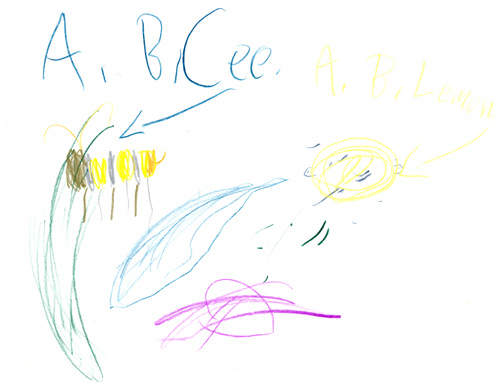
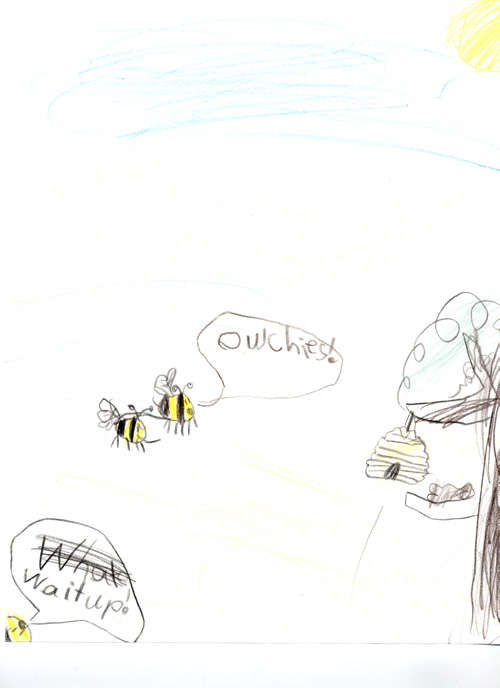

Your youngest will figure things out, when she’s older. She’s just not capable of understanding fully at her age.
Then too there is the fact things like bees are not under control. They are wild, unpredictable. Five year olds don’t handle uncertainty well. They’re old enough to know there are things out there who do what they damn well please, but they’re not old enough to accept that and get on with their lives. What the younger sprog understands is that bees could up and hurt her all on their lonesome. What she doesn’t understand is that bees don’t do that sort of thing unless provoked in some manner. In her mind their essential unpredictability translates into, “He’s gonna sting me!”
Then they turn six, andrenarche starts, and they turn into aggressively affectionate chaos spirits. (Contrary to popular belief, the “terrible twos” starts at around the 5th month of gestation, and continues until the day you, the parent, die.)